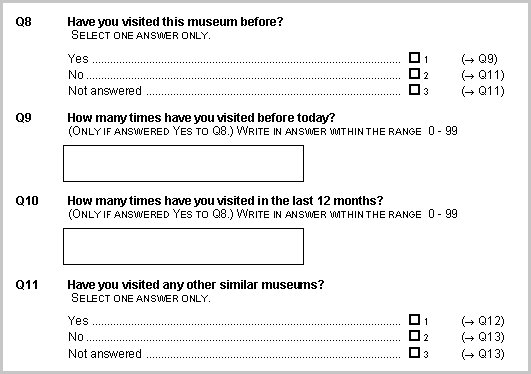Other common survey features
Blocks and compounds are used to group questions simply for presentation or organizational purposes. Unlike grids and loops, they do not define a hierarchy in the data.
A block is used to group a list of questions. For example, a block called Demographics might be used to group the demographic questions in a questionnaire. Three blocks (Respondent, DataCollection, DataCleaning) are used to group the system variables.
A compound is used to group a number of questions that share a category list. Compounds are typically used in paper questionnaires. Here is an example:
Compound
This compound question combines a categorical question (Q44), a numeric grid question (Q45), and a categorical grid question (Q46).
This question also shows examples of data entry notation, which is used on some paper questionnaires to help data entry personnel enter the respondents' answers correctly. This notation can be variable-based, which typically identifies each category with its category name or index value, and each question with the name of the associated variable. Alternatively, the data entry notation can be card column and show the card, column, and punch characters required for entering data that will be exported to Quantum, for example.
When you administer interviews using a computer, you can control the flow of the interview using routing controls. These determine which question is presented next based on answers to previous questions. In a paper questionnaire, routing is achieved using a combination of comments, instructions, and Go To statements. For example:
This example shows Go To instructions in the form of an arrow symbol and routing instructions to the interviewer (ONLY IF ANSWERED YES TO Q8).
See also


